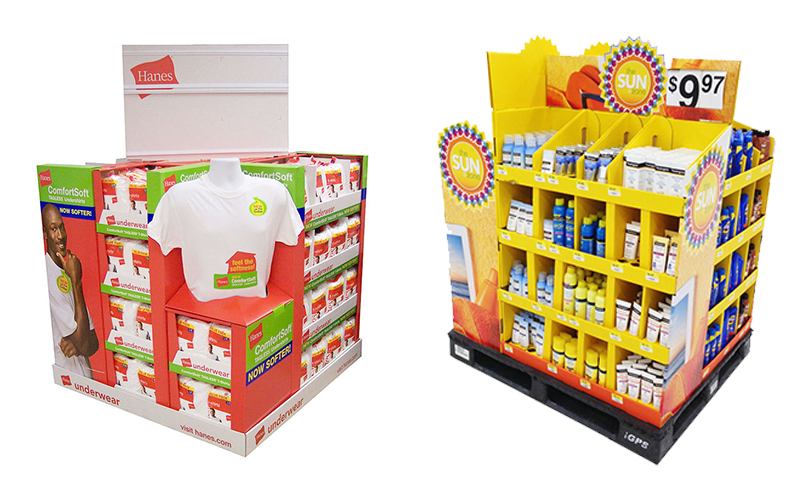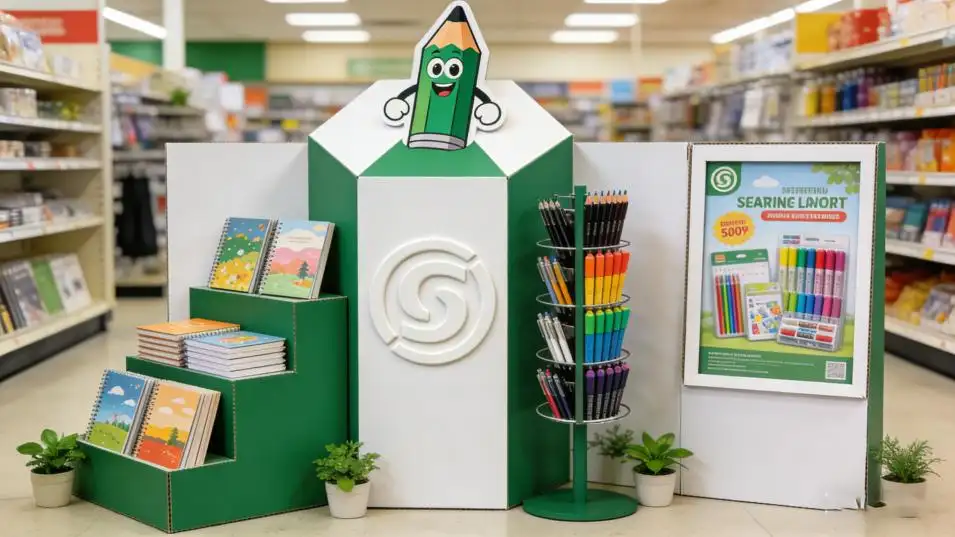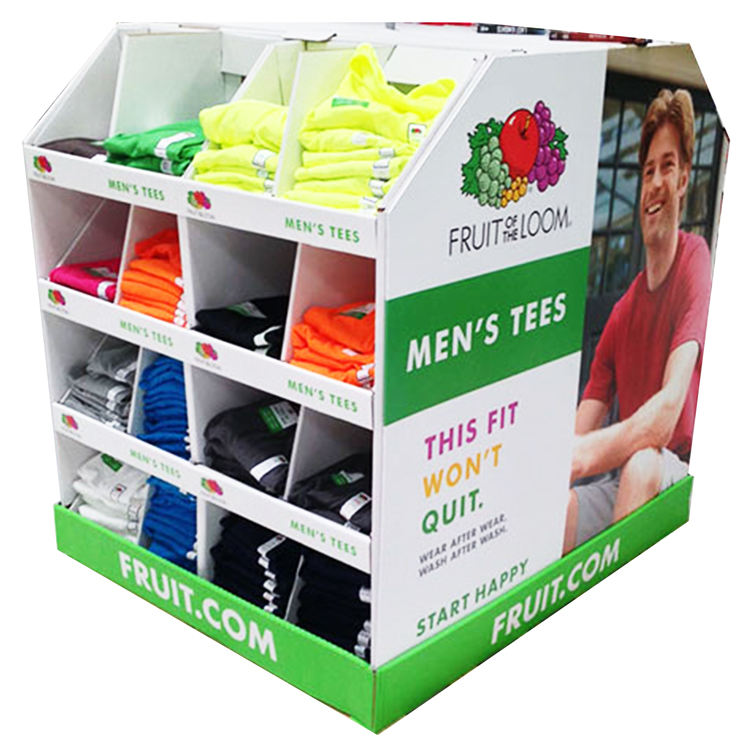Your amazing product gets lost on crowded store shelves. This means you are losing sales and brand visibility every single day. Custom cardboard displays make your product stand out.
Cardboard displays boost sales by attracting customer attention, creating a unique brand experience, and encouraging impulse purchases. They are versatile and cost-effective, making them a powerful tool for marketing products directly from the retail floor across many industries by highlighting specific features.
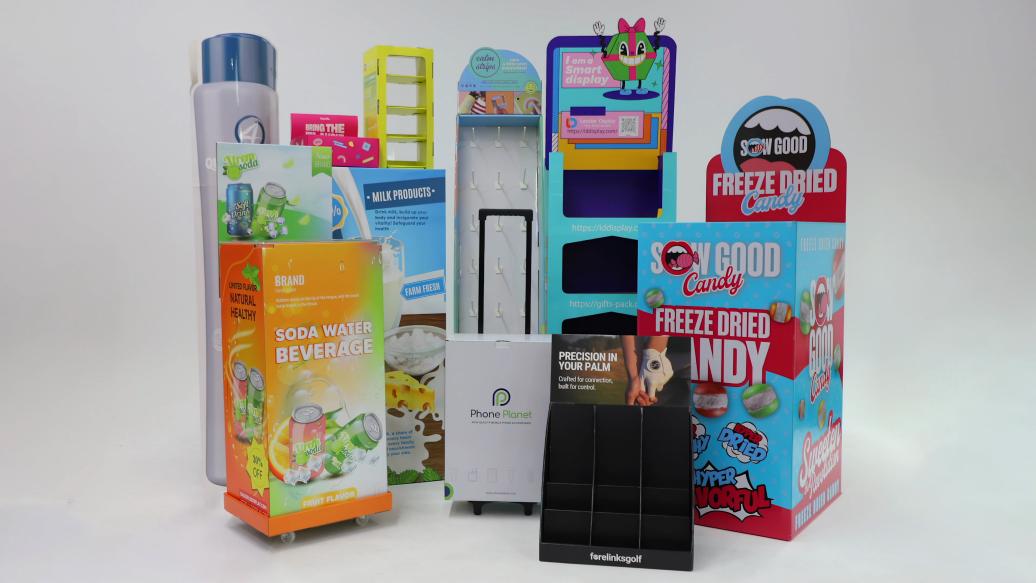
Over my 16 years in this business, I’ve seen firsthand the power of a well-designed display. The real secret isn't just using a display; it's about crafting the right display for the right industry. Different products have different needs, and understanding this is key to unlocking their sales potential. Let's break down how this works in several key sectors, looking at the specific challenges and opportunities each one presents.
How Do Cardboard Displays Dominate in the Food and Beverage Sector?
The grocery aisle is a battlefield for attention. Your tasty product can easily be overlooked among hundreds of competitors. A custom display turns your product into an unmissable destination.
In the food and beverage industry1, cardboard displays drive impulse buys at key store locations like checkout aisles2 and endcaps. They are perfect for seasonal promotions3, new product launches, and special offers, effectively separating your brand from the competition on packed shelves.

I remember working with a new snack brand that was struggling to get noticed. We designed a simple but bold floor display shaped like their star ingredient. Placing it at the end of the chip aisle resulted in a huge sales lift in the first month. It’s all about disrupting the shopper’s routine. For a designer like Peter, the challenge is creating something sturdy enough for high-traffic areas but also compliant with food safety standards. We often recommend specific coatings to protect the cardboard from moisture or spills, which is a practical detail that ensures the display looks great for its entire lifecycle.
Designing for Taste and Traffic
In food retail, you are selling an experience. The display must look appealing and clean. I always advise using high-quality printing4 to make food imagery look delicious. Glossy finishes can make colors pop, suggesting freshness. We also consider structural integrity5. A display for heavy drink bottles needs much more internal support than one for light bags of chips. This is where clever engineering and choosing the right grade of corrugated board become critical.
Key Display Strategies for Food & Beverage
| Display Type | Best Use Case | Design Tip |
|---|---|---|
| Counter Display | Small items like candy, gum, single-serve drinks | Use bright colors and a clear call-to-action. |
| Floor Display | Bulk items, promotional deals, new product launches | Design with strong structural support and a large header. |
| Dump Bin | Individually wrapped snacks, seasonal items | Make it easy for customers to grab items quickly. |
What Makes Cardboard Displays Essential for the Cosmetics Industry?
Your elegant cosmetic products are sold on looks, but they sit on a plain, generic shelf. This disconnect cheapens your brand image and fails to attract discerning customers.
For cosmetics, cardboard displays create a boutique-like experience6 within a larger store. They organize small items elegantly, showcase brand aesthetics, and allow for tester integration, making products look more luxurious and appealing, which directly influences the purchase decision.
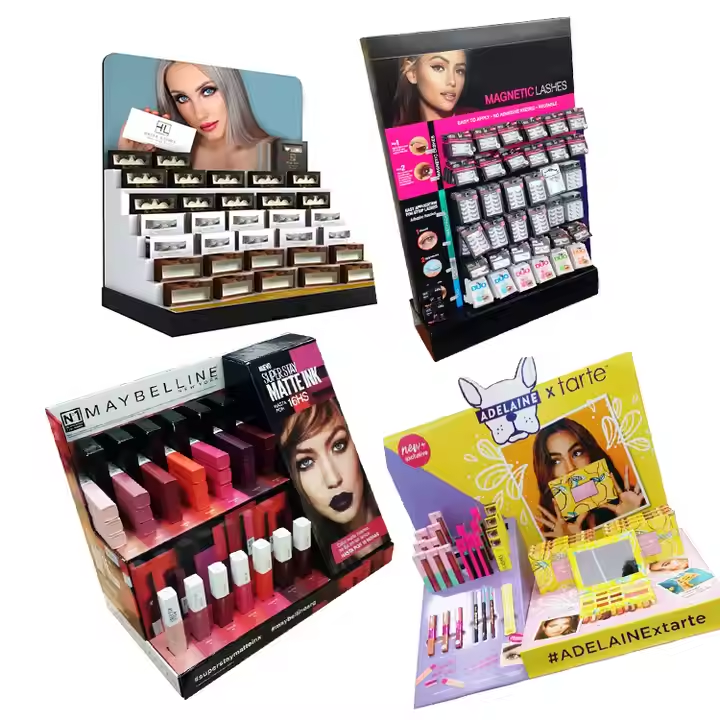
The cosmetics world is all about perception and brand. A flimsy, poorly designed display can kill a premium brand's credibility. I once worked with a skincare company launching a new organic line. We used matte-finish printing on recycled cardboard to communicate their natural, eco-friendly values. We also designed precise inserts to hold each bottle perfectly, giving it a high-end, organized feel. As a designer, Peter would understand the importance of these details. It’s not just about holding the product; it’s about presenting it in a way that tells the brand's story. The choice between a gloss or matte finish, or even a soft-touch laminate, can completely change how a customer perceives the product's quality.
Crafting a Premium Feel
The design must scream "luxury" or "clean beauty" or whatever your brand stands for. This is achieved through a combination of structural design and graphic excellence. Small details matter immensely. For instance, creating tiers within a counter display helps feature hero products. Adding a mirror or a small section with "how-to" tips can engage customers and encourage them to try the product.
Material Finishes and Brand Perception
| Finish Type | Brand Message | Best For |
|---|---|---|
| High Gloss | Vibrant, Modern, Eye-Catching | Youthful brands, bold color palettes |
| Matte | Elegant, Understated, Natural | Luxury skincare, organic products |
| Textured/Embossed | Premium, Tactile, Unique | High-end limited edition collections |
Why Are Cardboard Displays Perfect for Electronics and Accessories?
Tech products often come in sterile boxes, making it hard for customers to see their value. Without a clear presentation, your gadget’s cool features are completely lost on the shelf.
Cardboard displays for electronics organize products, highlight key features with bold graphics, and provide critical information at a glance. They can be engineered to be surprisingly strong and secure, giving customers the confidence to examine and purchase valuable items.

Many people think cardboard is too weak for electronics. That's a myth I love to bust. With the right structural design, a cardboard display can be incredibly strong. I recall a project for a company selling portable power banks. A key challenge was communicating the product's technical specs simply. We designed a floor display with clear comparison charts printed on the side panels. The display was also engineered with reinforced shelves and a locking mechanism for the back panel to prevent theft. For a designer like Peter, this is a fun puzzle: how do you balance security, strength, and open accessibility for the customer? It’s about creating a trustworthy home for the product7 on the sales floor.
Balancing Strength, Security, and Information
The primary job of an electronics display is to build trust. It needs to look sturdy enough to hold the products safely. Graphics should be clean and technical, focusing on benefits, not just features. For example, instead of "10,000 mAh," say "Charges Your Phone 3 Times." It connects the tech spec to a real-world benefit.
Choosing the Right Cardboard Grade
| Product Weight | Recommended Flute Type | Structural Tip |
|---|---|---|
| Light ( < 1 lb) | E-Flute or F-Flute | Good for counter displays, fine printing quality. |
| Medium (1-5 lbs) | B-Flute | Versatile for floor and counter displays, good strength. |
| Heavy (5+ lbs) | BC-Flute (Double Wall) | Use for floor displays with reinforced shelves. |
Can Cardboard Displays Really Work for the Publishing and Media Industry?
Your new book launch or movie release can get lost in a sea of spines on a bookshelf. If customers can't see the cover, they won't even consider picking it up.
Absolutely. For books and media, cardboard displays are essential for making products visible. A floor display or dump bin allows you to show off the full cover art8, which is crucial for attracting attention and driving sales for new releases or promotions.

I'm a big reader, so this industry is a personal favorite. The saying "don't judge a book by its cover" is terrible advice in retail. The cover is everything! I worked with a publisher on a major fantasy author's new release. Instead of just another dump bin, we created a floor display that looked like a castle turret from the book's world. It became a destination in the bookstore. Fans took pictures with it. This is how a simple cardboard structure becomes a powerful marketing tool. A designer like Peter can really flex his creative muscles here, turning a standard display into an immersive experience9 that stops shoppers in their tracks. It’s about building a world around the product.
Showcasing the Art
The main goal is to get the full front of the book or DVD case seen. Standard shelving only shows the spine. A floor display with tiered shelves or a dump bin lets you present the product face-out. This is especially important for children’s books, where the cover art does most of the selling.
Flexible Designs for Promotions
The media industry is driven by new releases and seasonal promotions3. Cardboard displays are perfect because they are cost-effective for short-term campaigns10. You can create a spooky-themed display for Halloween books or a festive one for holiday movies. The low cost and quick turnaround time allow brands to be nimble and react to market trends. This is a huge advantage over permanent store fixtures.
Conclusion
Cardboard displays are a versatile sales tool for any industry. Smart, tailored design grabs customer attention, tells your brand's story, and directly drives purchases right on the retail floor.
-
Explore effective marketing strategies tailored for the food and beverage sector to enhance product visibility. ↩
-
Learn about the psychology behind checkout aisles and their impact on impulse buying. ↩
-
Discover how to leverage seasonal promotions to boost sales and attract customers. ↩ ↩
-
Discover the significance of high-quality printing in creating visually appealing product displays. ↩
-
Learn about the importance of structural integrity in display design for product safety and visibility. ↩
-
Learn how to design retail spaces that provide a boutique-like experience, enhancing customer engagement. ↩
-
Find out how effective display design can build trust and encourage customer purchases. ↩
-
Learn how showcasing full cover art can significantly impact book sales and customer interest. ↩
-
Explore strategies for creating immersive retail experiences that captivate and engage customers. ↩
-
Learn how cardboard displays can be a budget-friendly solution for temporary marketing campaigns. ↩


